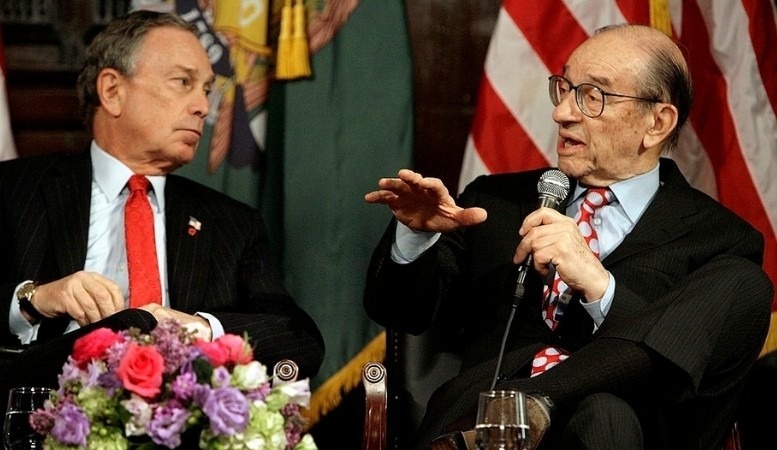Table of Contents
The Federal Reserve, also known as the Fed, plays an important role in global financial markets. Considering how critical the organization is, understanding its history and how it operates is crucial.
In this article, you’ll learn more about how the Fed was formed, how it evolved, and how it works.
The Short Version
After the Revolutionary War ended in 1783, Alexander Hamilton tried to form a central bank. At the time, this concept wasn’t politically feasible, so Hamilton had to shelve the idea. However, after the 1907 Bankers’ Panic, the idea came to life once again.
Why? The economic recession in 1907 led to runs on banks nationally. Many firms had to declare bankruptcy, prompting J.P. Morgan and other financiers to petition Congress to form a central bank.
In 1913, Congress rolled out the Federal Reserve Act. This legislation established the Fed as the nation’s central bank.
What Life Was Like Before the Fed
Considering the robust economy we have today, the concept of banks failing all over the country might hard to imagine. Before the Federal Reserve came into being, however, the economy was volatile. Banks had a high chance of failing, and regular cash crunches made the country a risky place for investors.
Find an institution that offered credit was a challenge and this stunted growth. Still, Americans rejected the idea of a central bank because of its similarity to the British financial system. Having just won the war, the American people didn’t want to become like their bitter rivals.
and this stunted growth. Still, Americans rejected the idea of a central bank because of its similarity to the British financial system. Having just won the war, the American people didn’t want to become like their bitter rivals.
As the nation’s first appointed Secretary of the Treasury, Alexander Hamilton felt differently. He went on to start America’s first national bank, The Bank of the United States. Located in Philadelphia, this bank played a pivotal role in the country’s financial development.
Hamilton also established the mint, took on the states’ war debts, and created the first federal tax. The idea was to create order in the financial systems with a fiat currency and a centralized bank.
The bank building, which is still standing today, lasted longer than the concept of a central bank did. The government didn’t even review the bank’s charter.
Hamilton made a few more attempts to establish this central bank, but all told, this experiment only lasted eight years before Congress shut it down. Unfortunately, Hamilton did not live to see his dream realized.
The Panic of 1907
The government debated the idea of a central bank for around 50 years leading up to the Panic of 1907. During this crisis, the economy looked as if it would crash. To ward off the depression that would follow, Wall Street asked for J.P. Morgan’s guidance.
Morgan called a meeting of powerful individuals who could make a difference. Together, they put cash back into the markets, allowing the banks and government to remain afloat.
In a way, the Bank Panic was good, as it convinced Congress that the central bank would be a valuable institution. Six years later, Congress passed legislation and established the Federal Reserve System.
Switching to the New System Was an Interesting Time
Before passing the legislation that created the Fed, members of the government and the nation’s most influential bankers worked together as the National Monetary Commission. These individuals researched the central bank concept by visiting Europe and seeing how the governments there operated.
The centralized systems of Britain and Germany made the biggest impression on the commission and were thus the foundation for developing the Federal Reserve System. The National Monetary Commission tweaked the model to include further improvements that the systems of other countries displayed.
Based on the commission’s recommendations, Congress drafted the Federal Reserve Act. This act laid the foundation for the creation of a central bank to reduce volatility in the economy.
The bank oversees the country’s monetary policy within the scope of its mandate. The regulations are very clear on the function, purpose, and structure of the system. Congress changes the Federal Reserve Act as the financial systems evolve.
President Woodrow Wilson signed the act into law and empowered 12 reserve banks. These Federal reserves can legally print money and thus control the cash supply. The bank’s mandate centers on minimizing inflation and unemployment.
Therefore, the banks cannot print money on demand, as this would allow inflation to spiral out of control. While Congress can amend the bill, the Fed actually operates outside government control.
The Great Depression
Ironically, some believe that the Fed’s autonomy prevented it from stepping in during the 1929 crash. Many people also believe that early intervention by the Fed would have prevented or at least lessened the impact of the Great Depression. Some analysts go a step further and blame the Fed’s high-interest rates for making it difficult for farmers to buy seeds to plant.
Could the Fed have prevented the depression? Would lower interest rates have kept the economy going?
The debate is exciting, but we’ll never know the answers. All we can say is that the Fed’s board probably believed that they were acting correctly. As it stands, this looks like a blemish on the Federal Reserve’s record.
World War II Boosted the Economy
World War II is credited with ending the depression. The Federal Reserve bought several government securities, and this injected some much-needed cash into the country and helped inflation remain low.
The Fed also kept interest rates low, which made borrowing money much easier for businesses. The war effort also boosted the economy as American factories cranked out supplies for the Allies.
The Federal Reserve kept interest rates low for many years after the war. This fueled a bullish economy until well into the 1960s.
The 1970s
Like everything else in life, economies move in cycles. The US economy saw another downturn in the 1970s. Inflation and unemployment grew while demand for goods began to stagnate.
As a protective measure, Nixon’s government made it impossible for other countries to swap their dollars for gold. The president also froze wage increases for three months and added a 10% surcharge to all imported goods.
This strategy helped stabilize the dollar, but many experts question whether or not it was the best option. These actions boosted the purchase of locally produced goods and calmed inflationary pressures. However, this strategy did not create more jobs, leading to higher unemployment.
Some believe that the Fed is better suited to make such decisions. During times of crisis, the Fed can reduce interest rates and thus give companies easier access to credit. However, the Fed cannot do this indefinitely, or inflation would spiral out of control.
On the flip side, if the Fed wishes to slow inflation, it may raise interest rates. This strategy makes investing more lucrative but restricts access to credit. The economy then contracts and jobs are lost.
Alan Greenspan

Greenspan began his tenure at the Fed in 1986. A year later, the economy crashed. Thanks to Greenspan’s leadership, however, this crash did far less damage than it could have.
Greenspan emulated J.P. Morgan and kept the economy going with the collaboration of the country’s leadership. Greenspan was an advocate of lower interest rates and is seen as pro-business.
During times of crisis, Greenspan kept the interest rates low to stimulate the economy. His leadership closely resembles what the original committee envisioned the Federal Reserve to be.
The Greenspan Era Is Over
Ben Bernanke succeeded Greenspan in 2008. Bernanke had the unenviable task of trying to rebuild the economy after the financial crisis of 2008. Janet Yellen followed Bernanke in 2014 and became the Fed’s first female chairperson.
Jerome Powell followed Yellen in 2018 and is the current board chairperson. Many allegations of government interference with Federal Reserve policies have surfaced since the COVID-19 pandemic began.
Critics believe that the Fed lost some of its autonomy during this period and kept interest rates low due to political pressure.
Is the Criticism Against the Fed Deserved?
Answering that question is a difficult task. The Federal Reserve’s board has made mistakes over the years, but successfully operating the Fed is not as simple as just keeping interest rates low.
Lower interest rates reduce the level of unemployment in the country. People have more disposable income, so they spend more. On the downside, however, inflation starts to build, and the dollar drops in value.
Some Americans believe that the Fed should continue to exert control over market conditions. Others feel that the board should allow the economy to evolve without interference.
For now, the board will exercise its right to find some sort of middle ground. In the future, as the economy begins to mature, doing away with a central bank altogether might be the best course of action.
Is Your Future Golden? Speak to the Experts at Oxford Gold Group About Investing Today
Investing in precious metal is a time-honored way to build wealth. However, you need some expertise to get started. The Oxford Gold Group is ready to assist you in navigating the occasionally confusing waters of the precious metal market.
Call us at 1 (833) 600-4653 to discuss your goals and find out how we can help you achieve them.








